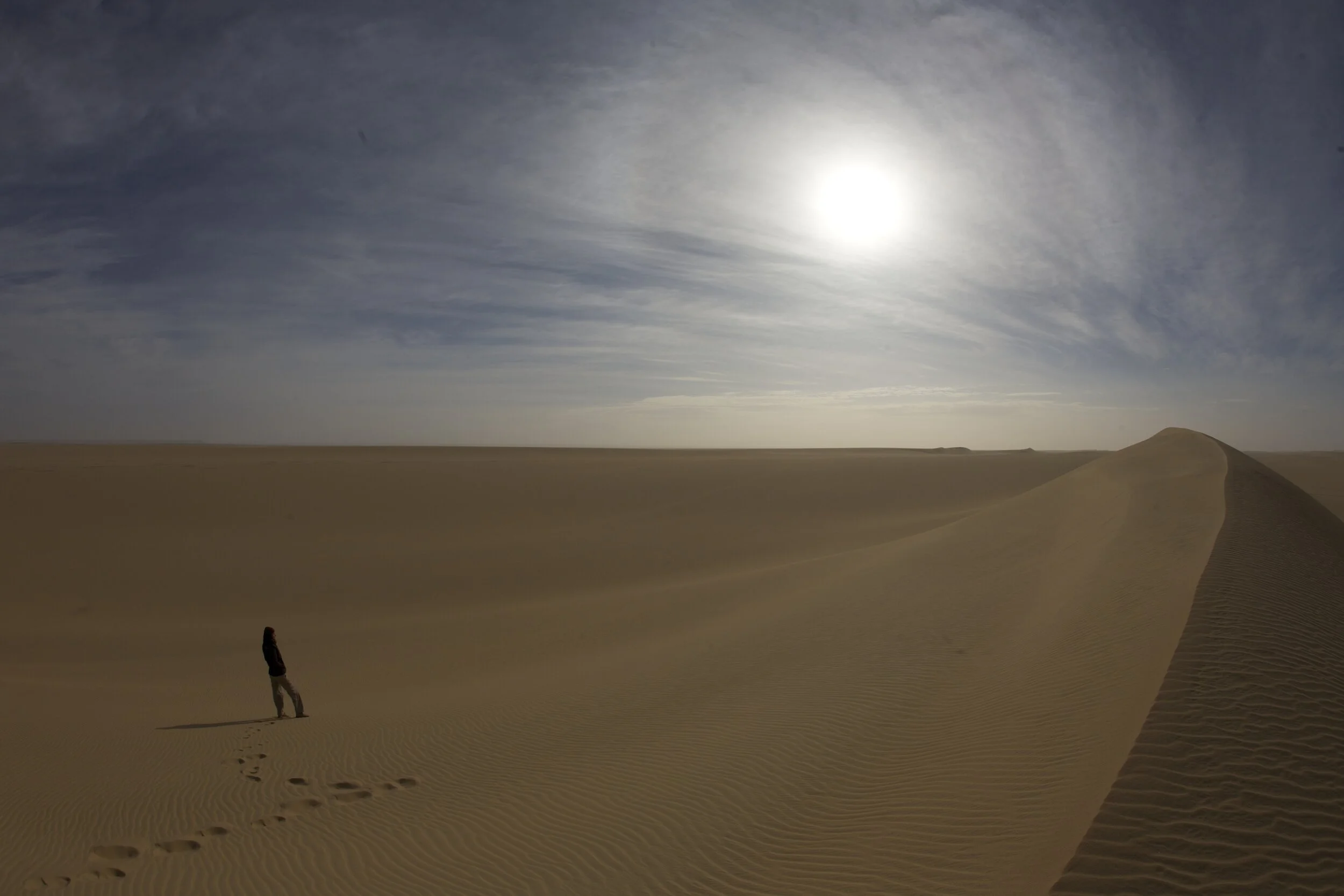Libyan Desert, Egypt, 2012: I am contemplating one of the world’s largest wildernesses, and my place in it. Photo by Jonathan Hanson
In a recent meeting in which the group was discussing human activities in a conservation landscape, one of the members abruptly sat back and said:
“I feel really weird here. I feel I don’t belong. I feel . . . invasive. Like an invasive species.”
Needless to say, the ensuing conversation was fraught and painful. For many of the group members, this was a first time delving into the painful sphere of wild and / or sacred landscapes and the duality of feeling intrusive versus longing to be there—a product of our time, the anthropocene.
Among the oldest members of the group and a veteran of wildlands conservation, I had an advantage: I’ve been grappling with this for over 30 years, and I have made my peace with where I fit into the wild.
Aldo Leopold described this conundrum in A Sand County Almanac:
“One of the penalties of an ecological education is that one lives alone in a world of wounds.”
Our speaker above, the one who felt like an invasive species, was experiencing these wounds. It’s a horrible feeling. Most of us who venture into and love wild places will confront this feeling as we get older . . . I was in my early 30s when it hit me. Do I belong? Aren’t I part of the problem, those destructive, invasive humans? Should I “take only photographs and leave only footprints”? Should I adopt a “don’t touch” attitude toward my most beloved places, lest I harm them? These are painful feelings for those of us who love wild places.
I was very much in this mode in the early 1990s when Jonathan and I moved to Brown Canyon, a remote part of the Buenos Aires National Wildlife Refuge in southern Arizona, as its first caretakers. We lived in the middle of a vast wilderness, our neighbors the band of coatimundis who chirped their way down canyon every few days, the female mountain lion who hunted the nearby hills, and even a lone male jaguar, who later someone named Macho B, and who we heard calling from the southern ridge. It was a fantasy existence for two naturalists and writers. I was unprepared for the lessons such a life would give me—but those lessons were a great gift.
Many nature lovers want to remove humans from the wilderness equation, but my experiences taught me that humans are inseparable from any concept of wilderness and preservation. In fact, they are essential to its future, as stewards and participants. Humans came from the “wild,” and many of us are drawn back there. To separate us is to put up barriers that taint this relationship. Jonathan and I grew up as wild kids whose playground was far northeastern Tucson; we didn’t have “playdates,” our parents didn’t drive us to manicured parks to play, and our only rules were not to get hurt and to be home before dark. We collected rocks and flowers and snake skins and feathers and nests and live animals, which we kept in cages in our rooms. We observed and tested and asked questions, but mostly we just played and explored in the vast deserts and canyons behind our homes. We were part of the wild, and that wild taught us how to be the best of what humans can be, which includes not only core strengths such as responsibility and analytical thought and creativity, but also loving, respecting, and protecting wild places.
Today kids are told not to leave their yards, their days are scheduled and regimented, they have no wild time. They are reprimanded if they collect a nest or a feather, they are told to “leave only footprints.” How can you come to love something you do not know, and how can you come to know something you do not experience? You will never learn the wild through a chainlink fence, from a static interpretive sign, or an app.
I fear kids today will grow up to feel like invasive species when they venture out into the wild. And their only response will be to go home and retreat into the world of apps and virtual experiences and no analytical thought or responsibility, and they will not even notice when the last northern jaguar dies in a fragmented and fractured remnant of a once-wild landscape.

